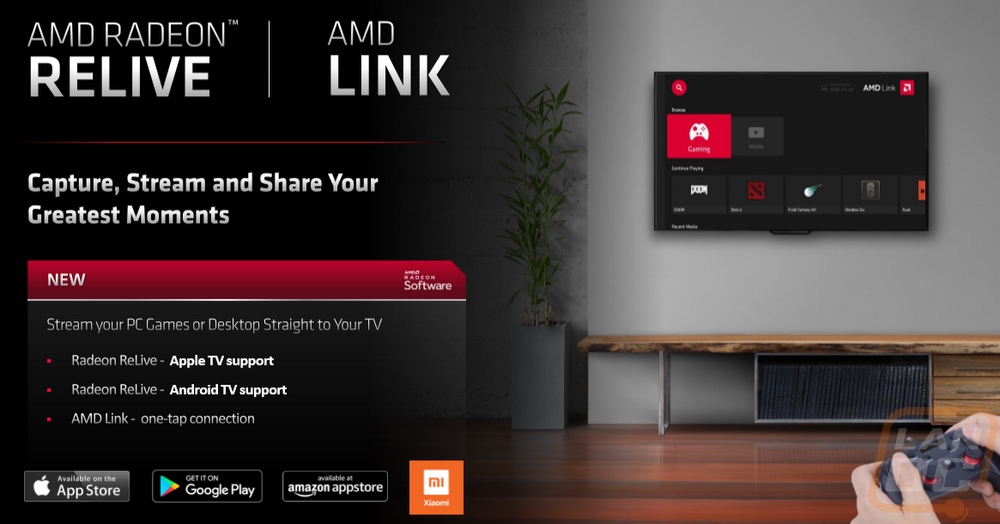Well I’m a little late to the party on this one, during the mad dash to the combined NAVI and 3rd gen Ryzen launch I ran into a lot of issues with our GPU test bench and late in the process after spending almost a full week in the original testing I dropped everything to switch the bench over to X570 and redid all of the work. The good news that gave me time to come in with numbers running on a faster and more accurate system to what a lot of you might be looking to run the RX 5700 and RX 5700 XT on. So today I’m going to take a look at what AMD has going on with their long-anticipated launch, check out the two reference models they sent, then put them through our tests to see how they perform. The Ryzen 9 3900X was a monster, it will be interesting to see how an all AMD system will perform.
Product Names: AMD Radeon RX 5700 and Radeon RX 5700 XT
Review Samples Provided by: AMD
Written by: Wes Compton
Pictures by: Wes Compton
Amazon Affiliate Links: AMD Radeon RX 5700 and Radeon RX 5700 XT
NAVI? RDNA? What’s it all about
Back at E3, in addition to announcing the RX 5700 and the 3rd gen Ryzen CPUs AMD went into a little more detail into the architecture behind the scenes with the RX 5700 and RX 5700 XT. Specifically, these are the first NAVI based video cards called NAVI 10. These are the first based on AMD's new RDNA architecture which is a huge deal, the older GCN architecture came out back in 2012. Officially NAVI is a mix between GCN and RDNA making it a hybrid. The new RDNA compute units are redesigned and optimized for single threaded performance and instructions per clock. This combined with huge improvements in cache helps get rid of the bottleneck that Vega had when gaming. They went from having four SIMD16 units on GCN to RDNA running dual SIMD32s. This helped them deal with the issue of GCN needing four cycles or clocks to process a single instruction which is fine when you are dealing with complex instructions but not as good with gaming code unless it is designed really well. RDNA now handles a single instruction in one cycle.
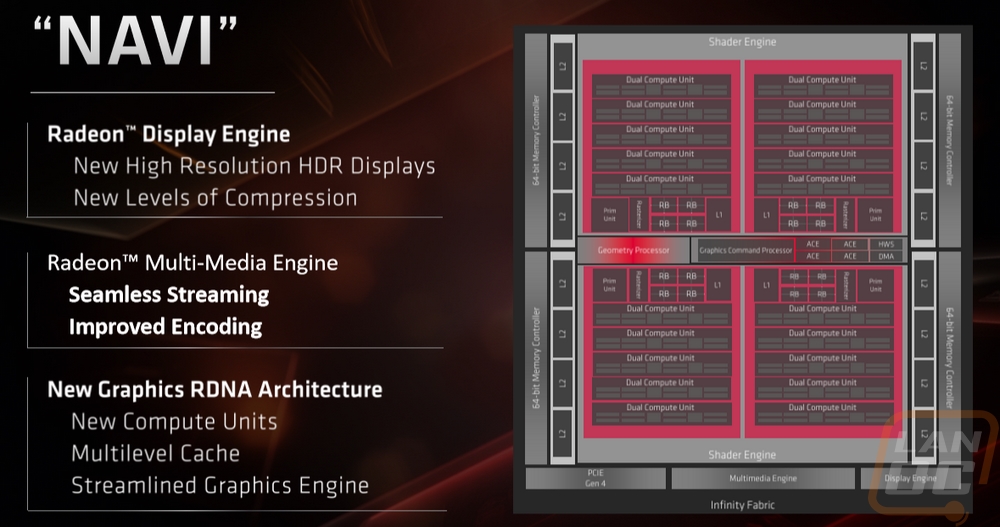
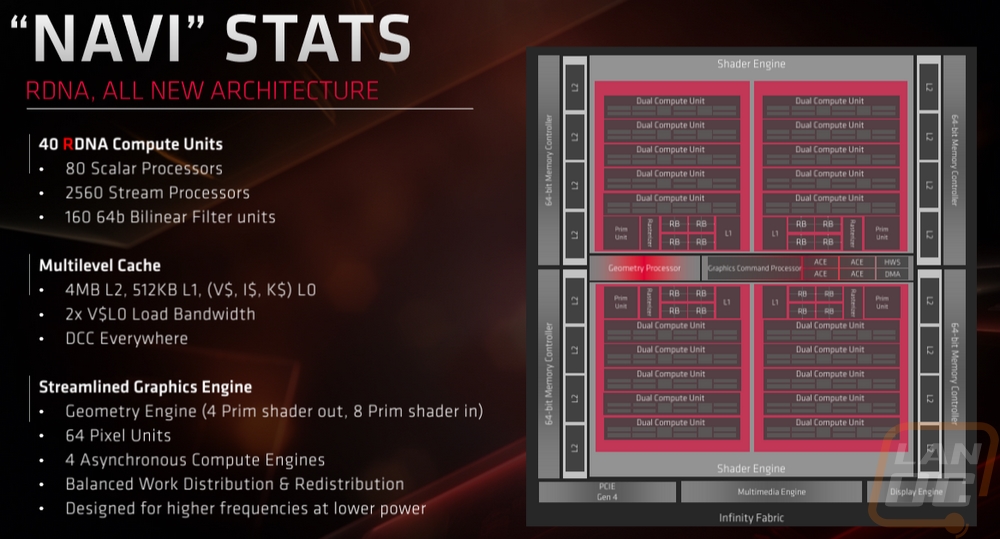
Other key improvements with NAVI are a lot easier to understand. For starters, they have dropped the manufacturing process size down to 7nm. Officially Vega was also made at 7nm, but only on the Radeon VII. The Vega 56 and 64 were both on 14nm FinFET as were the Polaris based RX 500 series cards. So this is their first widely produced GPU at 7nm. A smaller building process can be faster, cheaper because of smaller die sizes, and use less power. They also moved away from the HBM/2 memory that was used on Vega to GDDR6. HBM/2 memory really kept the costs up on Vega cards so I’m happy to see the move. The other big hardware change is the move to PCIe 4.0 support. X570 with 3rd Gen Ryzen just introduced PCIe 4.0 so AMD adding it on the GPU side is a smart move on their part. It does offer twice the speed of PCIe 3.0 but we will have to see how that translates to GPU performance.
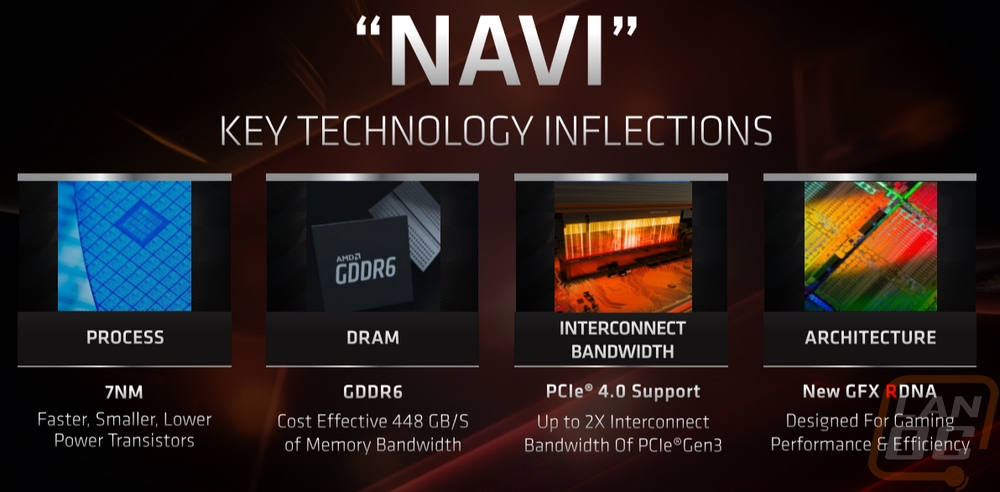
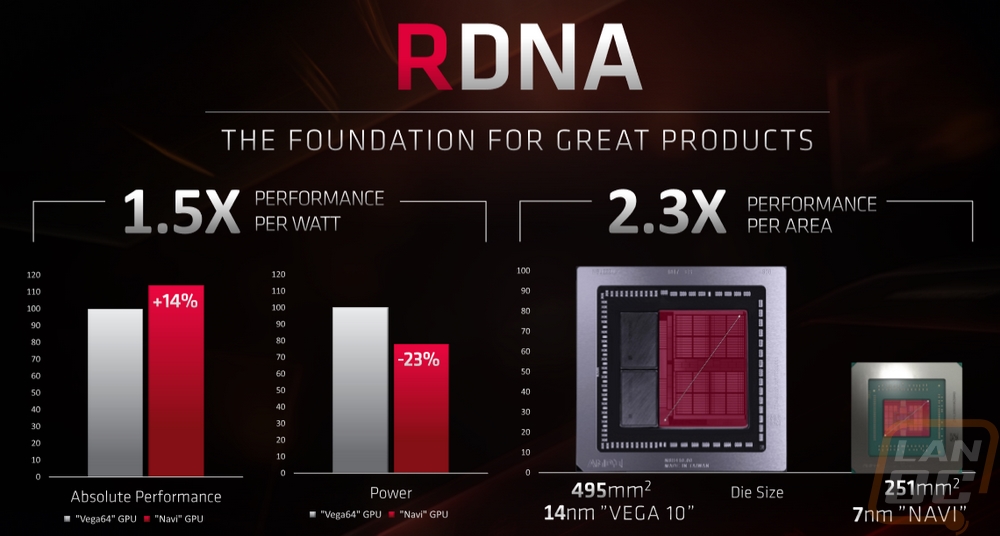
Another big move is the addition of Radeon Multimedia Engine. Nvidia has had NVENC for a while which is a way to offload video encoding on to the GPU and take away some of the CPU load. This is AMD's version of that. Its actually really interesting how much AMD in the last few years has latched on to the video production and streaming that a lot of gamers have been doing. This was also a big focus point with the original Ryzen launch with the additional cores that offered. Taking that load from the CPU on to the GPU does seem a little bit counter to that push on the Ryzen side of things but giving options is great and this is a great move on AMD's part.
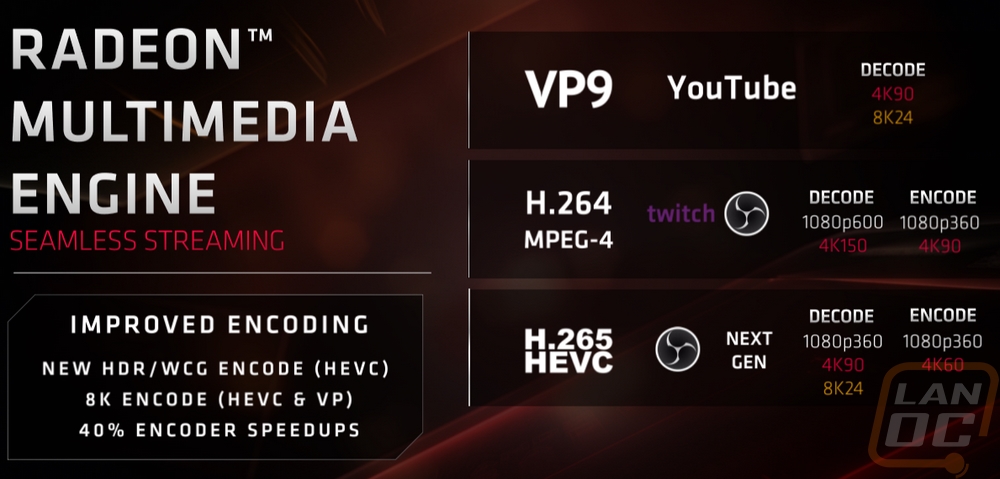
So what about the new cards right? That’s what we are here for in the first place and I haven’t mentioned them at all. Well, we have the AMD Radeon RX 5700 XT and the Radeon RX 5700. Other than the obvious aesthetic differences in the picture below which I will dive into when I look closer at the cards. Let's take a look at the specifications. So the RX 5700 XT is sporting 40 Compute Units which gets it a total of 2560 stream processors. The RX 5700, on the other hand, has a slightly cut down Navi 10 GPU with 36 compute units turned on giving it 2304 stream processors. They both get the same 256-bit memory controller running 8GB of 14 Gbps GDDR6. The drop in compute units also takes the 160 texture units that the RX 5700 XT has and drops it down to 144 on the RX 5700. The compute unit difference really isn’t that large between the two cards. To me, the biggest performance difference is going to be found between the clock speeds. The XT has much more aggressive clock speeds with the boost clock running up to 1600 MHz and the base clock starts at 1605 vs the 1465 MHz on the RX 5700. That makes a difference in power, the RX 5700 XT is listed with a board power of 225 watts where the RX 5700 with almost the same GPU is listed at 180 watts.
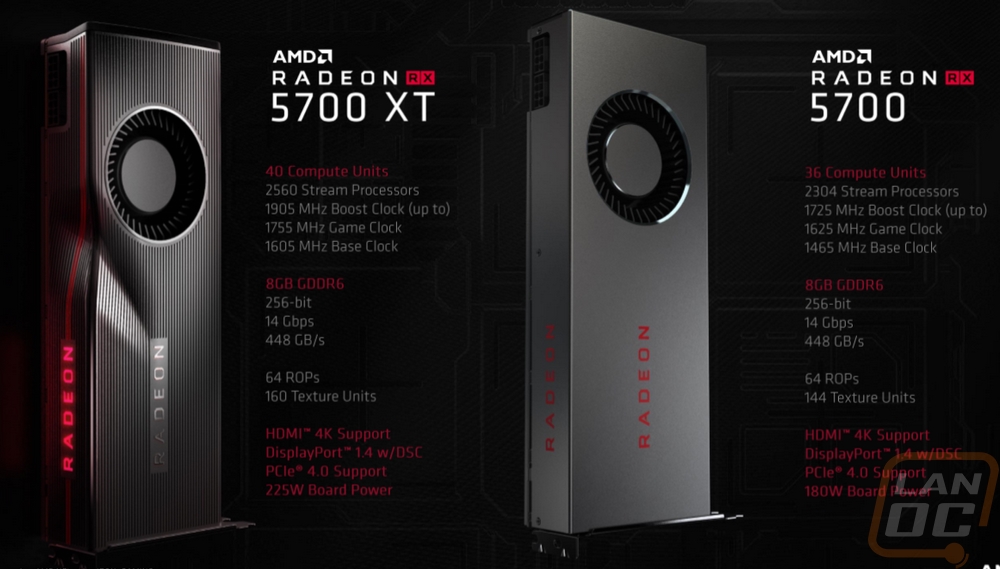 AMD also had a nice breakdown of the cooler design on the RX 5700 XT. It is a blower design and they have a heatsink up over the GPU and memory with the 7-phase VRMs look to be a little to the right of the heatsink. The heatsink has vapor chamber cooling and they went with a graphite thermal interface material between the vapor chamber and the GPU.
AMD also had a nice breakdown of the cooler design on the RX 5700 XT. It is a blower design and they have a heatsink up over the GPU and memory with the 7-phase VRMs look to be a little to the right of the heatsink. The heatsink has vapor chamber cooling and they went with a graphite thermal interface material between the vapor chamber and the GPU.
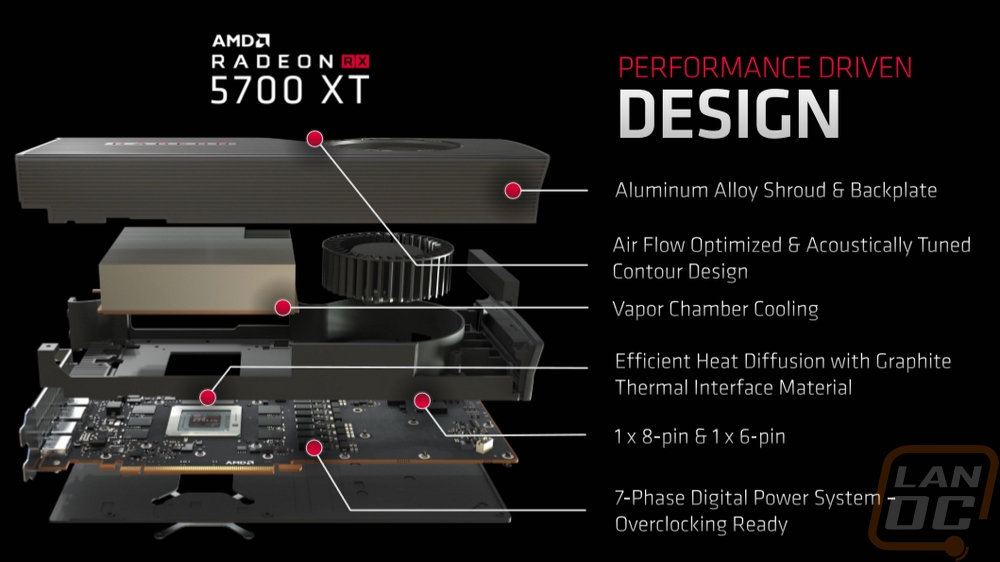
AMD has been at work on the software side of things as well with a few additions to help improve the user experience. A few of these we have seen before under different names from Nvidia, but that doesn’t name them any less important. Radeon Anti-Lag is a big one. The idea is to reduce the amount of input lag which is the delay between when you press a key and when you see the change on screen. There are a lot of things that affect input lag but the basic version of this is that games produce frames by pairing work done by the CPU and by the GPU together. The CPU does its work then gives it to the GPU. Most situations will find that the GPU is the main limitation and in those scenarios, games will perform the CPU work one or more frames ahead of the GPU resulting in at least two frames of latency. The new Anti-Lag option helps improve the pacing of CPU work allowing them to overlap without getting too far ahead to keep that input lag down.
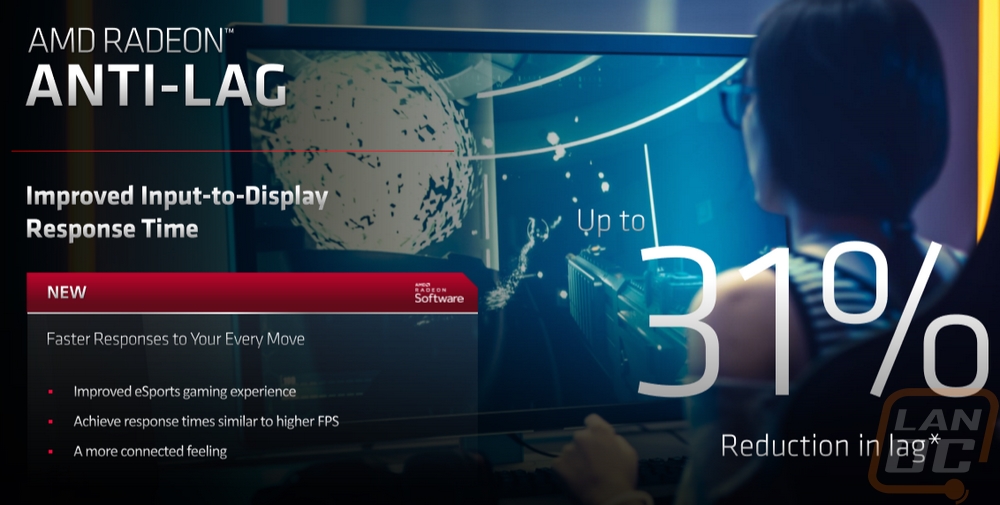
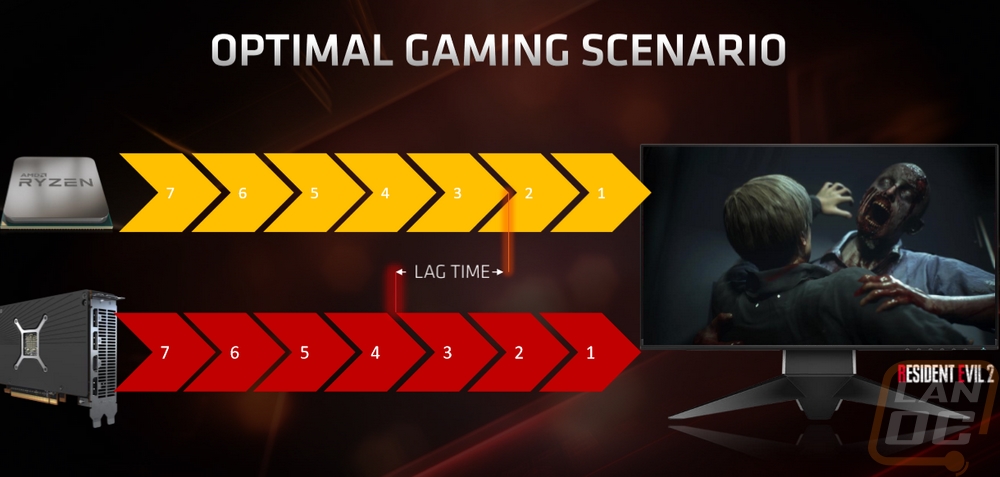
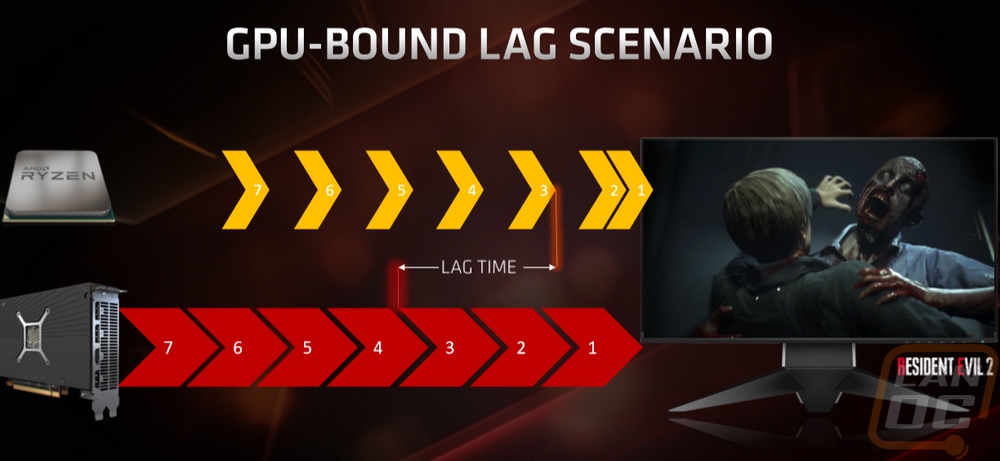
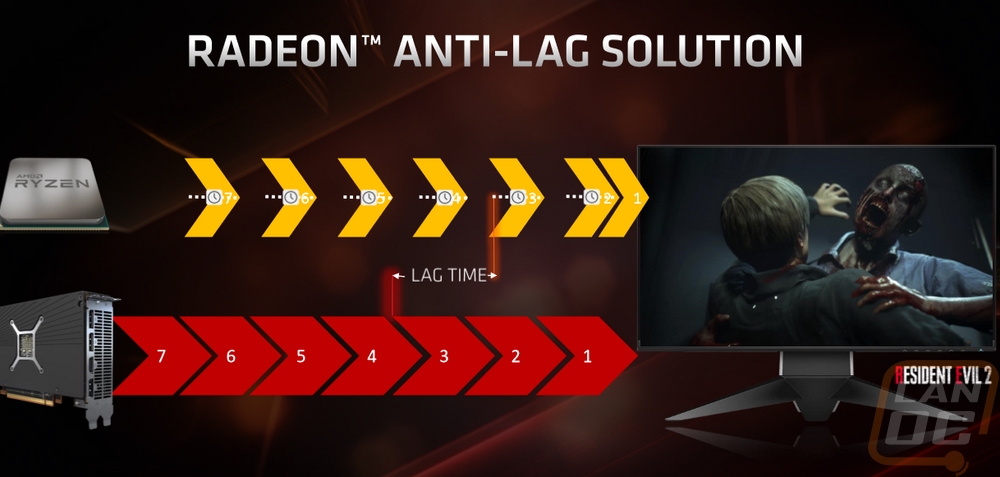
Another new feature is their Radeon Image Sharpening (RIS). RIS is based on the contrast adaptive sharpening algorithm that AMD provides game developers but RIS doesn’t require in game integration. It works across DX9, DX12, and Vulkan APIs. Basically, it modulates the degree of sharpening depending on contrast without some of the ringing and other issues that other similar solutions will sometimes have. AMD mentioned that this works well with Radeon GPU scaling where you can turn the resolution down to increase performance and then clean things up with image sharpening to still get crisp detailed visuals.
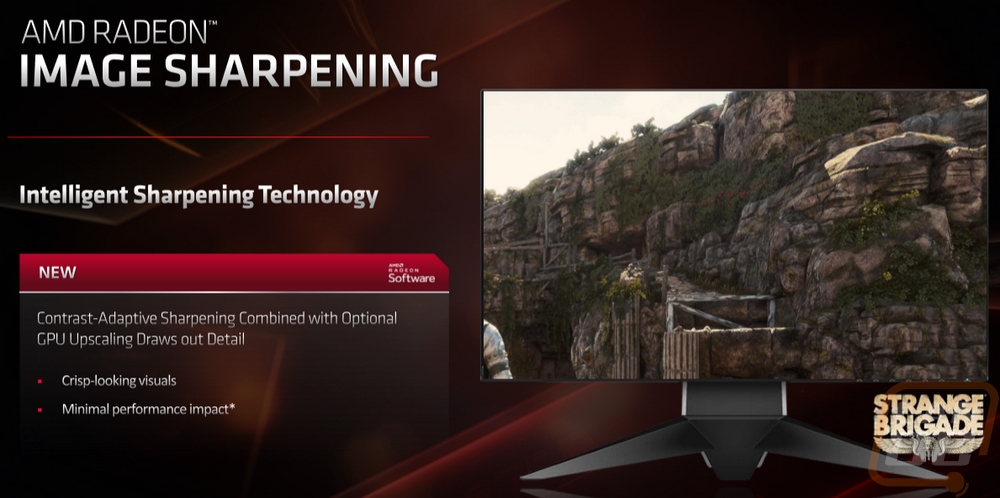
The last software additions I wanted to touch on aren’t new with this launch but are still interesting. AMD Link is a simple way to control your GPU with a mobile device. Then they have Radeon ReLive which allows streaming of your desktop or games to android and Apple TVs.
